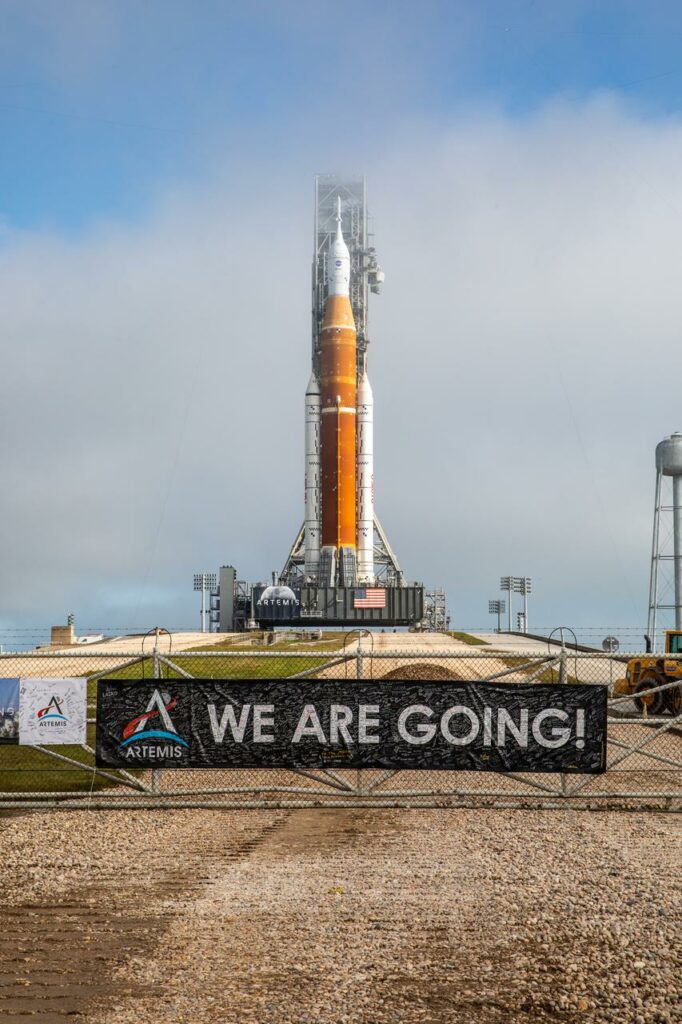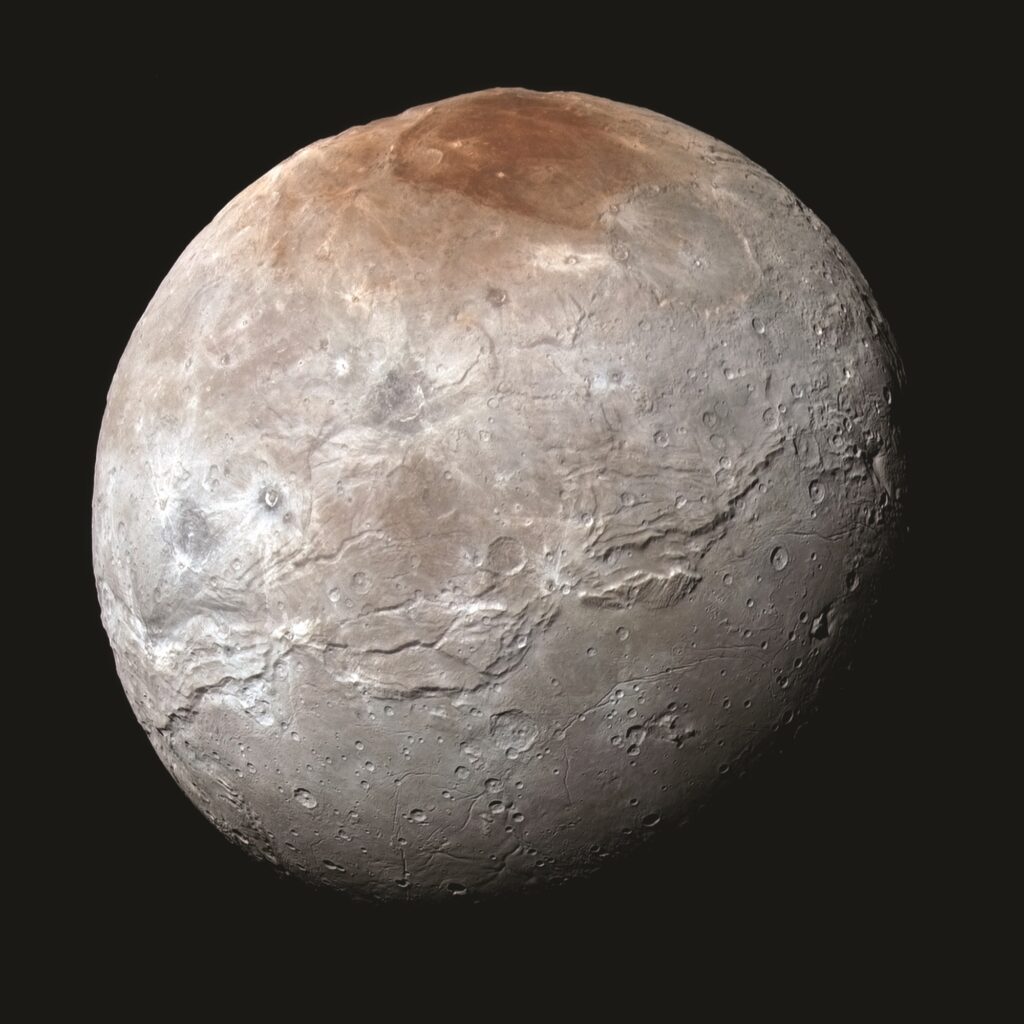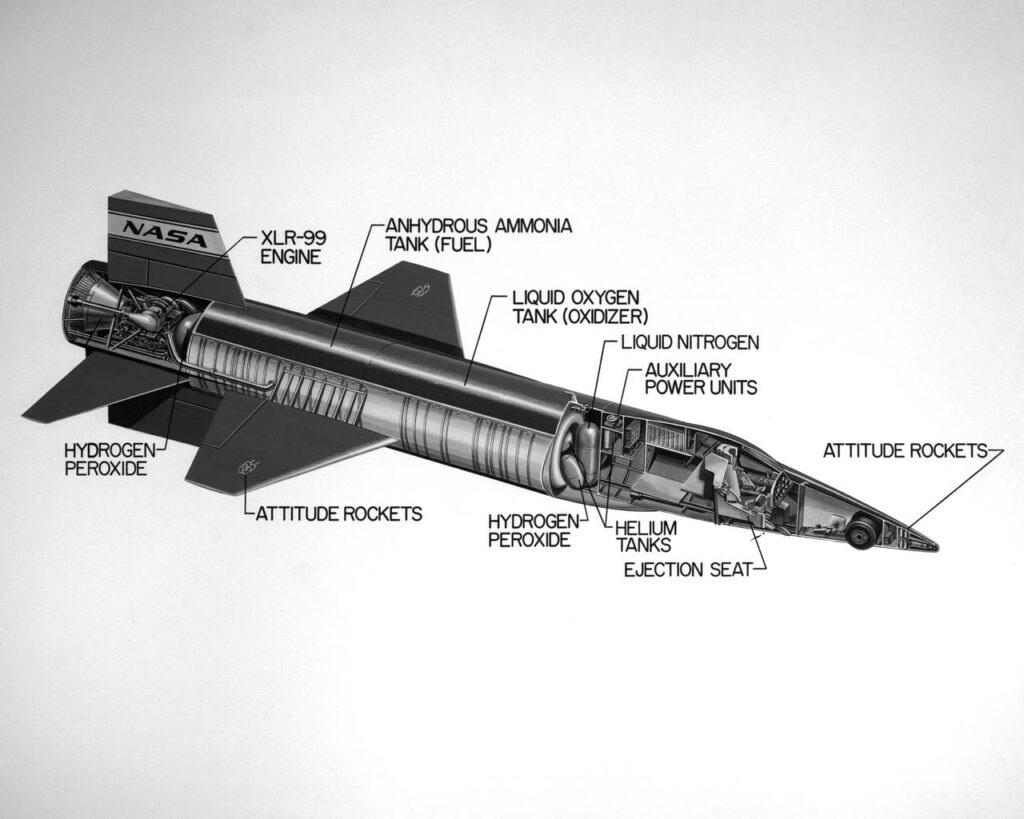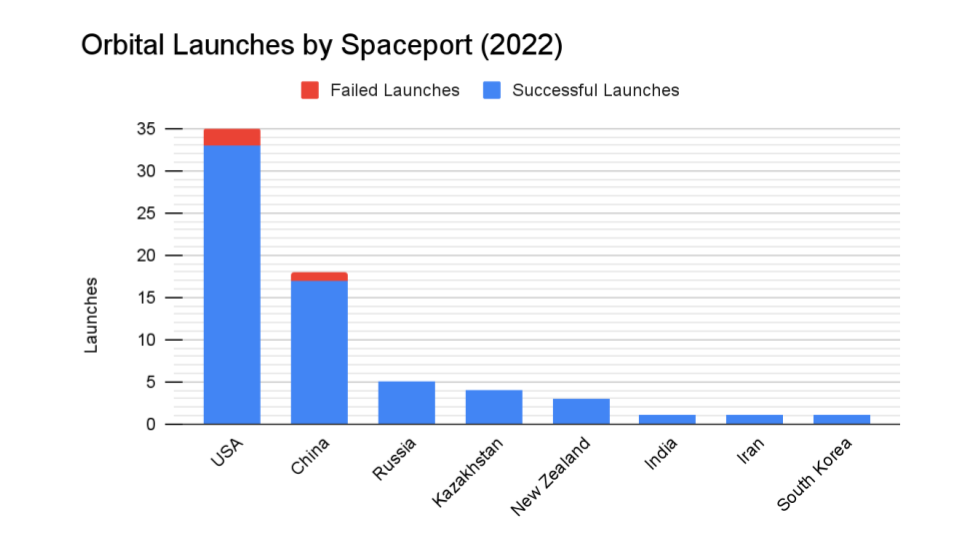An analysis of the craters on Bennu’s surface provides evidence that the rubble pile asteroid is protected from smaller impacts by the boulders scattered on the surface. Plus, the SLS Wet Dress Rehearsal, dwarf galaxies around M81, and this week in rocket history, we look back at the X-15 hypersonic plane.
Podcast
Show Notes
SLS rocket tries Wet Dress Rehearsal again
- Teams on Track for Artemis I Wet Dress Rehearsal Test (NASA)
- Artemis I WDR Update: Third Test Attempt Concluded (NASA)
- NASA’s Artemis I Moon Rocket Departs Vehicle Assembly Building for Next Tanking Test (NASA)
Blue blobs are star formation
- The University of Arizona press release
- “Young, blue, and isolated stellar systems in the Virgo Cluster. II. A new class of stellar system,” Michael G. Jones et al., to be published in The Astrophysical Journal (preprint)
Dwarf galaxies collecting around M81
- University of Michigan press release
- Seven newfound dwarf galaxies sit on just one side of a larger galaxy (Science News)
Charon’s red northern pole result of methane changes
- SwRI press release
- “Extreme Exospheric Dynamics at Charon: Implications for the Red Spot,” Ben Teolis et al., 2022 April 15, Geophysical Research Letters
Bennu’s boulders provide body armor
- NASA Goddard press release
- “Crater population on asteroid (101955) Bennu indicates impact armouring and a young surface,” E. B. Bierhaus et al., 2022 April 7, Nature Geoscience
The danger of megacities
- AGU press release
This Week in Rocket History: X-15
- Proceedings of the X-15 First Flight 30th Anniversary Celebration (NASA)
- PDF: The X-15 Rocket Plane (Michelle Evans)
Transcript
Hey, Pamela, SLS finally did the thing.
It did?
Mostly. They had to lie to the ground computer though.
Huh. That sounds… not good.
Eh, it worked. Ish. We also have more news on everyone’s favorite asteroid, Bennu.
And some galaxies that are lingering around the famous galaxy Messier 81.
All of this now, right here on the Daily Space.
I am your host Dr. Pamela Gay.
I am your host Erik Madaus.
And we’re here to put science in your brain.

First up, NASA and the Exploration Ground Systems program finally completed a full wet dress rehearsal of the Artemis 1 Space Launch System (SLS) rocket. More or less.
A wet dress rehearsal is a test of the entire launch countdown. The previous attempt was in mid-April 2022 and ended after a whole series of issues, mostly from the ground support equipment leaking in different ways. Liquid hydrogen, the rocket’s main propellant, is very powerful but is also very hard to manage in the rocket and the ground system.
SLS is a new rocket, and this test campaign is the first time its ground support equipment at the launch pad has been used, so it’s not surprising problems have been encountered.
On the morning of June 6, the Mobile Launcher with the SLS rocket rolled back out to pad 39B for the fourth attempt to finish this critical test before the launch of an uncrewed Orion capsule to the Moon later this year. Like the previous attempts, the countdown started dozens of hours before the actual “launch”.
Unlike the previous attempts, however, weather conditions did not delay the start of the count. At T minus 9 hours, the propellant load started. Loading the propellant takes time to avoid thermal shock from the extremely cold temperatures damaging the systems, such as increased tank pressure as the liquid propellant “boils off” into gas because of the relatively warmer tank which, left unchecked, could cause it to burst.
One of the problems encountered in the propellant load was a leak with the part of the ground system that loaded the liquid hydrogen and a valve on the rocket itself. Engineers tried to fix the issue by heating and cooling the valve and by overpressuring it to get the umbilical to seal to the rocket. Ultimately, they couldn’t fix the leak, so the ground computer was told to ignore the warning to avoid a scrub.
As the count continued, the ground computer successfully noted and ignored its own warnings about the leaks. At T minus 33 seconds, the ground systems transferred control to the onboard systems. About four seconds later, the onboard systems triggered a hold because they detected the leaks the ground system had been told to ignore.
In a post-test press conference, NASA said that they expected an automated hold sometime after T minus 33 seconds because of the umbilical leak and modified countdown, but they didn’t know exactly when it would happen.
All other events up to this point, including pressurizing the tanks, switching the rocket to internal power, and activating the Flight Termination System were nominal. The Orion spacecraft itself was also tested during this Wet Dress Rehearsal, and the result was nominal.
The bottom line is that the NASA team didn’t accomplish everything they wanted, but they did achieve more than last time, just with different issues. This means the fixes they tried after the last test worked, but some work still remains. According to the press conference, the team is still reviewing data to determine if another test is required, so they do not have a firm launch date at this time.
Space is hard, but they’ll get it eventually.

As we look around the universe, we are forever on the lookout for the cosmic missing links that will help us piece together how the structures in our universe transform over time. Locally, we see elder dwarf galaxies, devoid of any young stars. These systems are generally too small to see at great distances, and while we’ve speculated about their formation, catching a system in the act hasn’t been something we’ve been able to do… until maybe now.
Researchers using the Hubble Advanced Camera for Surveys (ACS) have identified five blue blobs of star formation that exist on the outskirts of the Virgo cluster in relative isolation. These locations were being looked at optically after radio data revealed these spots were rich in gas that they thought were associated with our galaxy.
Researchers weren’t expecting to find what could very well be baby dwarf galaxies, but, as researcher Michael Jones puts it: It’s a lesson in the unexpected. When you’re looking for things, you’re not necessarily going to find the thing you’re looking for, but you might find something else very interesting.
These systems are brilliantly blue and lack the characteristic red stars of older systems. They are also chemically diverse. This paints a picture of these gas blobs consisting of material stripped off older systems that are now forming brand new stars. This kind of gas stripping is the norm for systems falling into the Virgo Cluster, and now we know that gas can get recycled into something beautifully unexpected.
The universe is all about improv and showing there can be more than one way to get to the same result. While I am comfortable with the idea that those blue blobs will become dwarf galaxies, that isn’t to say there may not be other ways to make these systems.

Here is what we know so far: Dwarf galaxies typically have one or a few generations of star formation and then die, but there are exceptions. They are typically very old, but occasionally we find young ones. They are generally spread evenly around large galaxies, in numbers that are proportional to the primary galaxy’s size, but that too has exceptions.
Case in point. In a presentation at last week’s American Astronomical Society (AAS) meeting, researchers led by Eric Bell presented an image of the galaxy group dominated by the spiral galaxy M81. In this system, they found one certain and six potential dwarf galaxies all hanging out on one side of M81. Now, it is possible there is only one dwarf, and it picked a side to be on. But if those possible dwarfs are dwarfs, this is just a statistically weird system.
There are no rules – except the speed of light. Expect everything.
And now, let’s turn to some planetary science.
Back in 2015, the science community’s focus turned toward the New Horizons flyby of Pluto. The images the craft sent back early on were amazing, revealing not only the heart of Sputnik Planitia that has become iconic of the mission but also an intriguing red cap at the northern pole of Pluto’s companion Charon. Ever since that discovery, researchers have been trying to figure out just what mechanics produced that red cap.
The earliest proposed answer is not going to excite anyone – tholins. Per the latest press release: Tholins are sticky organic residues formed by chemical reactions powered by light, in this case, the Lyman-alpha ultraviolet glow scattered by interplanetary hydrogen atoms.

Okay, so the name ‘tholin’ is cool, and the concept is interesting. Basically, the tholin-like material seen at Charon could be created when ultraviolet light breaks down the methane molecules that are captured after they escape from Pluto’s thin atmosphere. Those methane molecules then freeze at the poles during winter, and when sunlight hits them, they break down. We’ve talked before about how sunlight breaks apart methane in stories about Mars where the debate over methane replenishment continues.
But testing out this theory about Charon was going to take time and effort since New Horizons was only a flyby mission. No going back for samples or second looks here. And to top it off, due to the distance and data speeds of the spacecraft, we are still receiving information collected during the flyby.
So scientists at the Southwest Research Institute replicated the conditions of Charon’s surface in the lab, as one does. This experiment allowed them to measure the composition and color of the hydrocarbons produced by methane freezing in that Lyman-alpha glow. Lead author Ujjwal Raut explains: Our experiment condensed methane in an ultra-high vacuum chamber under exposure to Lyman-alpha photons to replicate with high fidelity the conditions at Charon’s poles.
Of course, no experiment would be complete without a computer simulation, so the team also developed a new program that modeled Charon’s very thin methane atmosphere. And with all that data from the lab experiment, the model produced polar zone generating ethane, which doesn’t make anything red. Raut notes: Ethane is less volatile than methane and stays frozen to Charon’s surface long after spring sunrise. Exposure to the solar wind may convert ethane into persistent reddish surface deposits contributing to Charon’s red cap.
And that means more experimentation and simulation are needed. Science, especially when done at a distance, is not easy.

Even when done up close and personal, science is not easy. Many of our long-time community members worked on analyzing images taken by the OSIRIS-REx mission of the surface of asteroid Bennu. We all spent hours and hours counting and marking rocks and more rocks and boulders and even some craters, all to assist the mission in locating a good place for their touch-and-go sample return.
And just to ease the sting of all those rocks and rocks and boulders and craters, remember, we really did help them select a site. Our efforts were not for nothing.
Since then, scientists have been analyzing the data returned by the spacecraft while they await the return of the actual sample next year. And all of those rocks and boulders may be just why we didn’t count a ton of craters. Sure, there were some larger ones, but smaller ones were rare. Usually, the counts go the other way since smaller impactors are more numerous than larger ones, so we should have seen more small craters.
In a new paper published in Nature Geoscience, scientists reveal that those boulders may be acting like a shield that keeps the micrometeorites from creating craters. Instead, they hit the boulders and break apart or just chip the boulders themselves and bounce away. And what impactors make it through all the boulders to the surface end up creating smaller craters than expected because of all those rocks. If the surface was more uniform – say like a sandy beach – the outcome would be different.
So the rocks and boulders are actually body armor for Bennu. And you all helped count those rocks and boulders and craters… and rocks. And more rocks. Oh, the flashbacks.
Anyway, good work, everyone.
We’re going to wedge a bit of Earth science story between our news of space rocks and space rockets.

As any of you who’ve played SimCity know, it is easy to treat a city’s symptoms than its problems. Need more water, build pumps and aqueducts. Need more land? Fill in lakes. Have problems with flooding? Well, that isn’t a SimCity thing, but in real life, you build dikes and drainage.
Mexico City, formerly the great metropolis of Tenochtitlán was one of the first megacities in the world, and 700 years ago, it was already dealing with these issues. This Aztec city was originally built in the center of a great briny lake, and to support its large population, the salty water had to be kept out while fresh water was transported in.
In 1521, the city fell to the Spanish, who drained the lake and just kept building. As the city has grown to become one of the largest in the world, it has begun to sink as fresh water is pumped away, and it has continued to struggle with flooding and other water-related issues.
Today, geographers led by Beth Tellman are using this ancient city as a case study to understand how we need to look at cities as a whole and consider how water tables, surface water, and flooding are all interrelated. We can’t treat each as a separate symptom. This problem is affecting Boston, where the big dig drained land that is now sinking; Jakarta and Venice, which are just sinking while waters rise, and many other places around the world.
This research makes it clear that city planners need to treat water as a system, just like we have to treat blood circulation as a system and do more than just treat symptoms. Our world is, in many ways, alive, and the same errors doctors make – treat symptoms only – can be just as catastrophic with a planet as with a person.
All righty. Earth science lesson over. Now, on to more rockets.
This Week in Rocket History

NASA stands for the National Aeronautics and Space Administration because they do more than just space rockets.
In fact, before NASA went to orbit with the Mercury capsule in February 1962, they went to near space – and actual space – with the X-15 hypersonic research plane. The X-15 program was run with the United States Air Force, which had an interest in hypersonic flight for different, less wholesome reasons.
The program started flights in 1959 and conducted 199 flights until its end in 1968. Instruments gathered data on hypersonic flight, in particular how the extreme heat and pressure affected an aircraft’s structure. They also gathered data on the upper atmosphere and the space environment. Finally, the program showed how humans would react to flying at these incredible speeds and what kind of flight controls would be needed to control a spacecraft.
To reach the speeds needed, the X-15 used a liquid propellant rocket engine instead of a jet engine like a normal plane. The XLR-99 engine used alcohol and liquid oxygen, producing 260 kilonewtons of thrust. In addition to normal aircraft controls, the X-15 had small rocket thrusters to point the plane when it was above enough atmospheric pressure for the regular controls to work. The rocket engine meant that the plane could not take off on its own and do the mission, so the X-15 was carried to altitude on the wing of a B-52 bomber and dropped, after which the engine started, and the plane climbed toward space.
The X-15 was piloted by a small group of NASA and Air Force pilots, many of whom would go on to become NASA astronauts, including Neil Armstrong. Those pilots flew one of two general flight profiles in the program’s 199 flights: one for altitude, and the other for speed.

On an altitude flight, the vehicle pitched up steeply shortly after engine ignition, aiming for the highest apogee possible. Two of these flights made it to space, passing the 100-kilometer Kármán Line.
On a speed fight, the X-15 flew straight and level while firing the engine to achieve maximum velocity.
X-15 flight 59 was a speed flight that set the program’s first speed record on June 27th, 1962.
Pilot Joe Walker was in the cockpit of X-15 number one that day, and it was his thirteenth flight in the aircraft. The mothership’s flight profile was to take off from Edwards Air Force Base and go far away to drop the X-15 so that the X-15 could land back at Edwards at the end of its mission. The B-52 mothership took off at noon local time and was at the drop zone an hour later. The drop took place at 13:08 local time. During the flight, the aircraft reached a speed of 1,834 meters per second, which is just shy of Mach 6 (six times the speed of sound) and an apogee of 38 kilometers. The engine fired for 88 seconds. By the 572-second mark, the X-15 had traveled 223 kilometers over the ground before landing back at Edwards.
The 1,834 meters per second velocity was an unofficial speed record for the time and would end up the third-fastest X-15 flight during the entire program. Joe Walker would fly a total of twenty-five X-15 flights before going on to fly the Lunar Landing Research Vehicle, a test rig for the planned Apollo Lunar Module.
In all, three X-15s were built. One was destroyed in flight, but the other two survived. Today you can find one in the Smithsonian National Air and Space Museum in Washington, DC, while the other is at the National Museum of the United States Air Force in Riverside, Ohio, near Dayton.
Statistics
And now, for some statistics.
The number of toilets in space is eight: four on the ISS, one on Soyuz MS-21, one on the Crew Dragon Freedom, one on Tianhe, and one on Shenzhou-14.

We keep track of orbital launches by launch site, also called spaceport. Here’s that breakdown:
USA 35
China 18
Russia 5
Kazakhstan 4
New Zealand 3
India 1
Iran 1
South Korea 1
From those 68 launches, a total of 1,106 spacecraft were put into orbit.
Your random space fact for this week is that the space shuttle simulator in Space Camp had you avoid an alligator or handle a burst tire while landing. Space is hard.
This has been the Daily Space.
You can find more information on all our stories, including images, at DailySpace.org. As always, we’re here thanks to the donations of people like you. If you like our content, please consider joining our Patreon at Patreon.com/CosmoQuestX.
Credits
Written by Pamela Gay, Beth Johnson, Erik Madaus, and Gordon Dewis
Hosted by Pamela Gay, Beth Johnson, and Erik Madaus
Audio and Video Editing by Ally Pelphrey
Content Editing by Beth Johnson
Intro and Outro music by Kevin MacLeod, https://incompetech.com/music/


 We record most shows live, on Twitch. Follow us today to get alerts when we go live.
We record most shows live, on Twitch. Follow us today to get alerts when we go live.